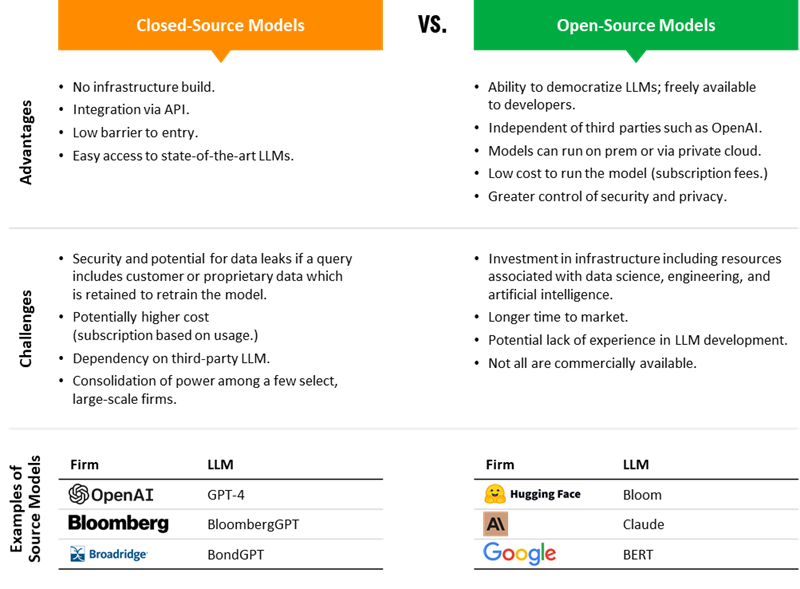A Guide To Determining Best Fit LLMs
Criteria for Navigating the Ever-Growing List of Large Language Models
Abstract
With the introduction of ChatGPT, large language models (LLMs) have become a significant part of the AI landscape due to their ability to revolutionize various business processes. The market for these technologies is expected to grow at an exponential rate, and there is a steady stream of newly released LLMs. But with the profusion of new models in the marketplace, executives across all industries are struggling to understand the differences among the ever-growing list of LLMs. At a recent industry panel hosted by Celent, it became clear that executives needed a guide to understanding and differentiating among the universe of LLMs.
Each LLM reprsents an intricate compilation of technologies with different architectures, capabilities, algorithms, and data sources. But even so, enterprises can begin to develop a short list of commercial options by understanding and applying three basic, high-level criteria: open-source versus closed-source, generalist versus domain-specific, and output options.
We offer wealth management executives a framework for determingng best-fit models along with an inventory of some of the largest and most popular LLMs.
Challenges and Advantages of Closed Vs. Open-Source Models


